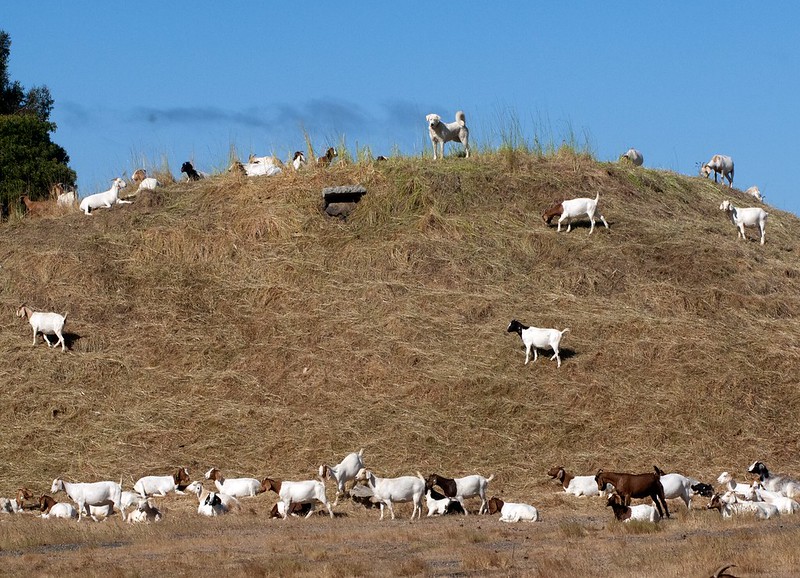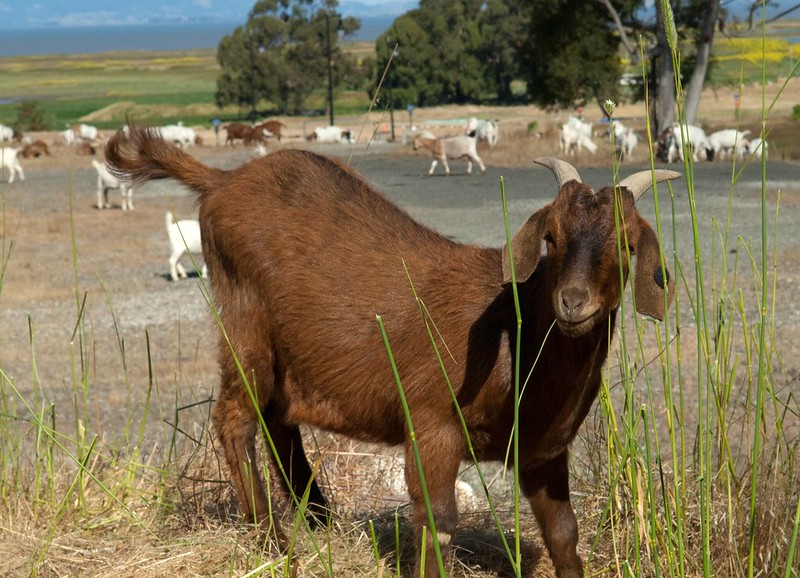 With wildfires devastating California, the solution might not be found on four wheels, but rather, on four legs.
With wildfires devastating California, the solution might not be found on four wheels, but rather, on four legs.
The age-long tradition of using herbivores to lower the risks of fire is employed all over the world.
Areas at high risk of wildfires, such as California, have been testing the efficiency of this method—let’s understand both the causes of such large wildfires and the role these goats play.
Fuel to the Fire
Black mustard is one of the most invasive species in California, having taken over much of the rolling coastal landscape.
It was introduced to the US from Eurasia, and as an aggressive species, they were able to outcompete native plants. Their faster reproductive rates and release of biochemicals in the soil to impede the growth of native species ultimately led to their widespread success and the elimination of many native species.
 However, the main problem with this invasive species is their growth cycle. Not only can they grow thick and plentiful but as winter annual species, they grow during the early-winter rainy months. They dry up by July or August, thereby becoming the perfect fuel just in time for fire season in California.
However, the main problem with this invasive species is their growth cycle. Not only can they grow thick and plentiful but as winter annual species, they grow during the early-winter rainy months. They dry up by July or August, thereby becoming the perfect fuel just in time for fire season in California.
These piles of dried black mustard combined with other invasive species such as the star thistle can catch fire quickly during the dry, hot seasons, resulting in even more devastating and widespread fires.
In an attempt to curb the population of such species, land officials employed herbicides, power tools, and human labor. But this proved challenging as the dried masses were often located in hard-to-reach areas such as the steep, rocky slopes of the Californian landscape which were difficult for humans or large machines to access.
The solution? Goats.
The Grazers Arrive
 Deployed before fire season begins, hundreds of goats are released to graze on invasive species to limit the growth and flammable biomass by the time fire season starts. A herd of a hundred goats, oftentimes accompanied by a goatherd and herding dog, can graze up to an acre every day.
Deployed before fire season begins, hundreds of goats are released to graze on invasive species to limit the growth and flammable biomass by the time fire season starts. A herd of a hundred goats, oftentimes accompanied by a goatherd and herding dog, can graze up to an acre every day.
Why goats, you might ask? The goats have natural adaptations that make them one of the best animals for the job. Not only are they one of the longest domesticated animals, but you’ve probably seen pictures of goats walking on impossibly steep walls, seemingly defying the laws of gravity. With mobility a human or machine would have trouble keeping up with, they are able to navigate through hilly California terrain with ease!
Another benefit that isn’t as obvious is the goat’s digestive tract. Goats can eat plants that would otherwise be poisonous to other creatures. Not only that, when eating seeds, the digestive process renders the seed nonviable when it comes out. This means there isn’t a chance for a seed, likely from an invasive plant, to be deposited and grow in another area.
The investigation of the goats’ effectiveness is still underway. However, the predicted impact model and results of employing the help of these hardy animals prove promising as an environmentally friendly and natural form of fire control. Because of their versatility and effectiveness, it’s likely we may see goats being used much more in the near future.
Sources: NPR, LA Times, National Geographic, biodiversityla.org







